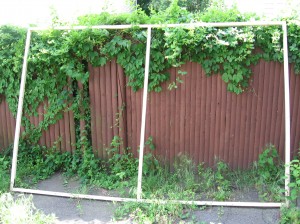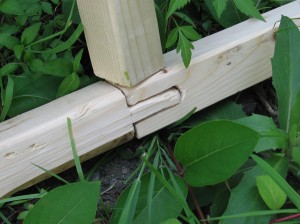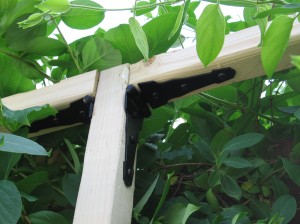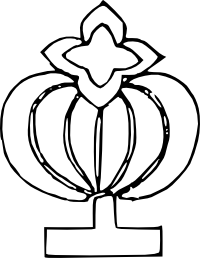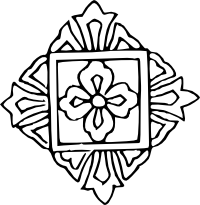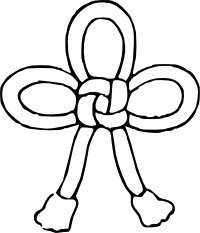Recreational research into Feudal Japan
Resource: Electronic Kuzushiji Dictionary Database
Jun 8th (a Sembu (先負))
Translating historical Japanese manuscripts can be challenging for a variety of reasons. One is that, despite the thousands of characters Japanese has to start with, historical writers weren’t content to just write them clearly. Japanese cursive uses “kuzushiji” (崩し字), or broken characters, hiragana or kanji that have been heavily stylized in any number of different ways. Since strokes blend together and shapes get simplified, it can be difficult to figure out the original character from the stylized form.
I just found a very useful resource for piecing apart these texts: the Electronic Kuzushiji Dictionary Database (page in Japanese). It lets you put in a character and see historical cursive versions of that character, with dated citations going back at least as far as the 16th century. While this isn’t super-useful if you’re totally uncertain, it can really help confirm guesses and narrow down possibilities for characters in manuscripts, and electronic dictionaries are nice and quick to search.
Hat tip: Naruhodo なるほど‘s “Introduction to kuzushiji 崩し字”, which is also a good overview of Japanese cursive characters in general.
Primary Source: Kenmon Shokamon
Jun 5th (a Shakkō (赤口))
O-umajirushi is great for an idea of what mon were like in the Momoyama period, but what were they like before that? There are few earlier sources for mon other than depictions of battle scenes and similar. One that I have found, however, is Kenmon Shokamon (見聞諸家紋), which translates to “Various Observed Family Crests”. It’ss an excellent collection of a wide variety of earlier mon, some of which have been featured on this blog as “provincial samurai” mon. It was originally published around 1467–1470, and it features crests that were observed on the banners and camp curtains of the Ōnin War, which started the Sengoku period.(ja.wp:見聞諸家紋) It contains a variety of combinations and motifs that are rare or absent by the time of the later codifications. I recently got access to the full text of this source via Google Books and shenanigans, and it has plenty of interesting designs, featuring a wide selection of plovers and also including a phoenix, a horse, and a shrimp. It also features some unexpectedly pictorial designs that in some ways are more similar to the later Edo period designs than those in common use around the Momoyama period. Its selection of mon that combine multiple elements in different ways will be useful for those seeking to register mon in the SCA.
I haven’t had time for detailed analysis as of yet, but I present the text for your enjoyment:
Link: O-umajirushi
Jul 19th (a Daian (大安))
Preparing for teaching a class at Pennsic (my first!) on Japanese heraldry, I’ve been gathering some good sources for figures. One of the best primary sources for Sengoku-era heraldry is O-umajirushi, a collection of heraldic displays printed somewhere in 1624–1644. Contrary to some sources, all six scrolls still exist, and I just discovered they can be found online at the National Diet Library of Japan. Enjoy!
Link: A Roll of Japanese Armory
Jun 12th (a Sembu (先負))
Just found an article that’s apparently been up for a while on the Academy of Saint Gabriel where the illustrious Solveig Throndardottir discusses family crests: A Roll of Japanese Armory. It’s short, but it features several pages of mon from the Battle of Sekigahara in 1600, which is handy for those seeking a wider selection of Azuchi-Momoyama period (1573 to 1603) mon.
Hut in Progress
Jun 5th (a Tomobiki (友引))
I’ve long planned on making a hut based on the one described by Kamo no Chōmei in his An Account of a Ten-Foot-Square Hut, and I’ve finally put some actual time into building it. Chōmei, after a political failure, fled the capital to become a Buddhist hermit, and while doing so wrote an account of his way of life that’s both widely acclaimed in Japan (and often compared to Walden) and handy for anyone trying to recreate such a setup. His hut is actually described as being collapsible, with hinges, for easy transport, and while mine is based more around what I can get for cheap at Home Depot than precise levels of authenticity, that is the right spirit for a SCA structure. I probably won’t have it done for Pennsic this summer, but nothing’s impossible. So far, I’ve got the frame for one wall, and it seems to be working pretty reasonably.
I’ll post some detailed instructions when I’m done, but here are some tidbits so I don’t forget.
- I seem to drill my holes with enough randomness that I can put two screws longer than half the thickness of my wood directly opposite each other without them hitting.
- If at all possible, orient your wood such that you’re not drilling through a knot.
Link: Wax-resist Dyeing
Jun 2nd (a Daian (大安))
I just found a cool description of Japanese wax resist (“batik”) dyeing (rōketsuzome/ろうけつ染め) at Blue Lotus. This way of adding a design to cloth goes back to the Nara period (710–794)(ja.wp:ろうけつ染め) and is one technique that was used to put designs such as mon on kimono. This is something I’ve been wanting to experiment with for a while, and it’s nice to see an easy-to-read description of the modern process in English.Watch movie online Logan (2017)
Link: Samurai Heraldry: Flags and Standards of Samurai Armies
Dec 27th (a Tomobiki (友引))
It’s still a while before the lunar New Year, but I hope those of you with modern holidays are enjoying them. Perhaps one of these winters I’ll actually girl up to building a Sei Shonagon-style snow mountain. I just wanted to follow up my recent link post on samurai banners: some more banner depictions by the same artist and more background information can be found in a forum thread: Samurai Heraldry: Flags and Standards of Samurai Armies. May the your modern New Year be auspicious to you all.
Two Mysterious Mon
Dec 13th (a Shakkō (赤口))
Finishing off the provincial samurai mon, I have two flower designs that I haven’t been able to find elsewhere and haven’t figured a convincing explanation for viagra pharmacie en ligne.(KJ:7) Flower variations are probably the most common type of mon, so it’d make sense that there were variations that didn’t catch on, but the specific flowers these are supposed to be remains a mystery to me. The first perhaps is on a melon, and the second has an intricate angled square design. Maybe one of you will have some insight?
Mon of the Week: Bowl with Chopsticks
Dec 5th (a Sembu (先負))
The basic bowl-with-chopsticks design, simply a circle above two horizontal lines, was first used as a seal in ancient times. It is associated with a tale about the founder of the Narita family: faced with a battle after running out of provisions, he visited a shrine, ate the offering of rice left there, and proceeded to fight most impressively.(Dower:106) This variation, from the collection of provincial samurai mon,(KJ:7) has filled in the bowl with a simple perpendicular-lines pattern of a type used on fabric..
Mon of the Week: Knot
Nov 28th (a Tomobiki (友引))
Continuing with the provincial samurai mon, we have this simple depiction of a knot.(KJ:7)
This is not just any knot, however. This knot is called “agemaki” (総角) and auspiciously symbolizes the four directions. It is hung above sumo rings, and was used on samurai armor both for decoration and as a structural component.(Samurai Weapons) For these reasons and its graphical simplicity, it makes a lot of sense as a samurai mon. Slightly more stylized depictions continue to be used in mon today,(Kamon Composition Maker) albeit rarely.
Less relevantly, it names a similar-looking historical (but later) hairstyle and type of dance in kabuki. Nowadays, they are used to decorate cars in Japan’s “VIP style”.(Diamond Zeus)
